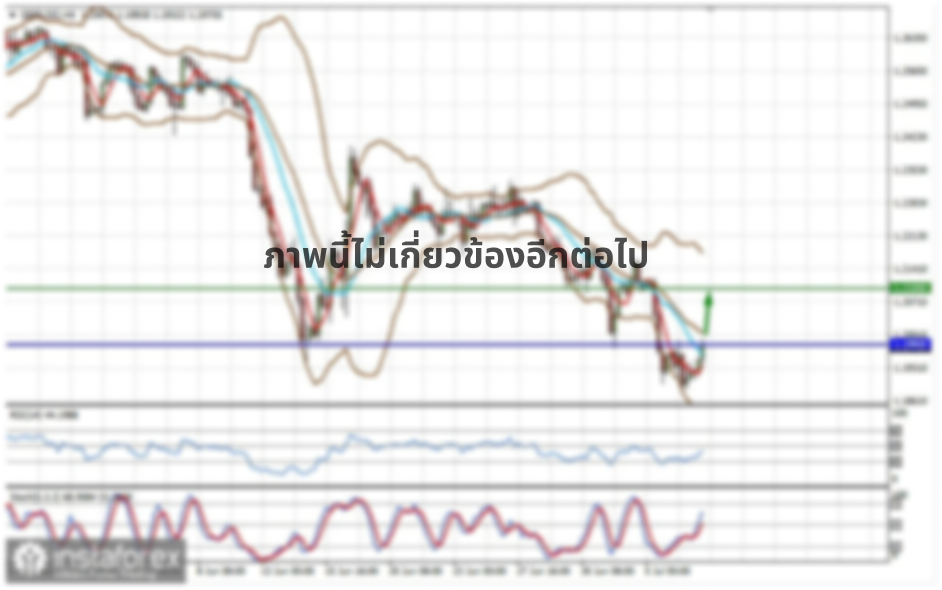4-hour timeframe
Technical details:
Higher linear regression channel: direction - sideways.
Lower linear regression channel: direction - sideways.
Moving average (20; smoothed) - sideways.
CCI: -57.9978
The EUR/USD currency pair did not change its technical picture too much during the first trading day of the week. More precisely, it hasn't changed at all. Throughout Monday, there was an open flat and reluctance of traders to open new positions. On the one hand, this is good, as the flat is better than moving 200-300 points daily. On the other hand, trading in the current conditions is also not very convenient. The pair simply stands in one place. Based on this, we still insist on our scenario of "consolidation after an ultra-volatile month and a half of trading". If this scenario really came into effect, then the euro/dollar pair will continue to move between the levels of 1.0800 and 1.0900 for some time. During this time, all price anchors above/below the moving average line, rebounds/surmounts of the Murray levels, and other technical signals of the "linear regression channels" system will be weak. Volatility levels, if the pair remains flat, will also be a mere formality, since they will not be worked out. Based on all the above, traders now need new data that would allow them to break out of the flat and start forming a new trend. Unfortunately, there are no major events on the horizon. Thus, we believe that a flat or very similar movement can be observed within one to two weeks.
On Tuesday, April 21, the macroeconomic background will be extremely weak. On this day, only three ZEW indicators are scheduled to be published: the EU economic sentiment index (forecast -62), the German business sentiment index (forecast -42.8) and the German current economic conditions assessment index (forecast -82.3). It is not difficult to guess that all three indices will go below the waterline by the end of April, but much below it. The March figures were extremely weak, and in April they will be frankly disastrous. And we believe that all economic indicators for the European Union, the United States and other countries of interest are about the same. The first month of the epidemic in the EU and overseas was very tough. However, the situation did not change in April. The quarantine persists, and the economy continues to idle. Thus, in April, there will be a further reduction in all indicators of the EU and US economies. Therefore, positive figures should not be expected. However, this does not matter for the euro/dollar currency pair. First, ZEW indices are formal indicators that do not affect the behavior of traders. Second, market participants continue to ignore any macroeconomic statistics. Third, the EU and US economies are declining synchronously and at approximately the same pace, so traders now have no reason to buy the euro or the dollar on the basis of a larger reduction in one or another economy.
But what is more than enough now is forecasts for the final losses of the world economy, as well as the economy of each individual country due to the "coronavirus" epidemic. We have already read the forecasts of the IMF, Bloomberg, Morgan Stanley, and other world-famous structures. Echoed by ECB chief Christine Lagarde, who believes that the Eurozone has already faced a sharp drop in GDP and the labor market. "Uncertainty is very high and will remain high for some time, making it extremely difficult to predict the potential scale and duration of a recession, as well as the timing of economic recovery," Lagarde said. Recall that the IMF predicted a 7.5% reduction in the European economy in 2020.
Meanwhile, a crisis is still brewing in Europe amid different views of the northern and southern countries on the question of supporting the regions most affected by the "coronavirus". Recall that the most affected countries are now Spain, Italy, and France. These are the countries that require support from the ECB. However, the ECB cannot simply pour any amount of money into any country's economy. Now the process of pumping the economy with cash is carried out through the purchase of government bonds of a country. However, there are limitations here as well. Some countries, like Germany, Austria, and Finland, believe that the governments of Italy, Spain, and France should handle their own problems. The crisis is one for everyone. If the ECB continues to buy government bonds of the most affected countries, it may lose the support of Germany and other most powerful countries.
At the same time, it is reported that the EU countries will need at least 1.5 trillion euros more to counter the consequences of the crisis. This was announced by EU Commissioner for Economics Paolo Gentiloni. "The Eurogroup has made offers of assistance worth more than 500 billion euros to finance the health sector and short-term assistance, as well as to support small and medium-sized enterprises," Gentiloni said. Thus, it remains to find another trillion euros for other needs. The European Union, according to ECB Vice-President Luis de Guindos, will suffer the most from the current crisis. Not least because the EU already has troubled Greece and Italy. The first – was on the verge of leaving the EU after the mortgage crisis, the second – has a much higher level of public debt than prescribed by EU regulations. On this basis, the ECB suggests that Brussels create a "Single Bank of Bad Assets" in the Eurozone, to which various financial companies will transfer problem debts. The purpose of creating this bank is to get rid of many problematic and bad loans that have remained on the balance sheets since the 2008 mortgage crisis. The ECB fears that the new crisis will cause a new wave of growth of bad loans and, accordingly, the banking system will suffer again, its ability to issue new loans will be severely limited, which will slow down the process of economic recovery after the "coronavirus crisis". However, the European Commission is opposed to this idea, as it does not want to violate the principle that the state helps the bank only after the procedure of rehabilitation. The European Commission also believes that there is a more acceptable way to dispose of bad loans.
From a technical point of view, it is now difficult to distinguish the boundaries of a possible side channel. So for now, traders are advised to just keep this thought in mind and not expect a strong movement. However, formally, the euro/dollar pair may still rebound from the moving average and resume its downward movement, since so far the flat is only an assumption based on a fairly strong drop in volatility.
The volatility of the euro/dollar currency pair as of April 20 is 88 points per day. Thus, fears for a new wave of panic in the market are still untenable, and market participants continue to reduce their level of activity. Today, we expect the pair's quotes to move between the levels of 1.0773 and 1.0949, and in general – quiet trading. A downward reversal of the Heiken Ashi indicator may indicate the end of an upward correction.
Nearest support levels:
S1 - 1.0864
S2 - 1.0742
S3 - 1.0620
Nearest resistance levels:
R1 - 1.0986
R2 - 1.1108
R3 - 1.1230
Trading recommendations:
The EUR/USD pair continues its corrective movement against the new downward trend. Thus, traders are advised to wait for its completion and again trade down with the targets of the volatility level of 1.0773 and the Murray level of "0/8"-1.0742. It is recommended to consider buying the euro/dollar pair if the price is fixed back above the moving average, with the goals of 1.0949 and 1.0986.












